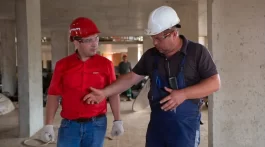Work injuries are often thought of occurring after a one-time incident, such as a fall or an explosion. This is not always the case, and oftentimes work injuries develop over time from repetitive motions. These repetitive motion injuries, or repetitive stress injuries, may be eligible for workers’ compensation benefits if the employee is able to prove that the cause of injury is due to repetitive motions or postures at work.
What Are Some Common Repetitive Motion Injuries?
Repetitive motion injuries can include many different conditions like:
Carpal Tunnel Syndrome
The carpal tunnel is a passageway on the palm of the hand that is surrounded by ligaments and bones. When there is pressure on the median nerve, carpal tunnel syndrome can be a result. A common cause of this pressure is repetitive hand motions. Symptoms of carpal tunnel syndrome include tingling, weakness in the hand, and numbness.
Lateral Epicondylitis (Tennis Elbow)
Lateral epicondylitis, or tennis elbow, is caused by overuse. Tennis elbow is the micro-tearing or inflammation of tendons. Although tennis elbow gets its name because tennis players are prone to the condition, any type of repetitive use of the forearm or extension of the hand and wrist can cause it. Carpenters, plumbers, painters, cooks, and auto workers are all prone to developing tennis elbow. Symptoms include burning or pain in the outer part of the elbow and weak grip strength.
Rotator Cuff Syndrome
Rotator cuff syndrome in the workplace is caused by degeneration of the tendon tissues surrounding the shoulder joint. Heavy lifting and repetitive overhead activity can cause this. Painters and carpenters are most susceptible to this injury as they often take part in overhead repetitive arm motions that damage the rotator cuff over a period of time. Symptoms can include arm weakness and an ache in the shoulder.
Stenosing Tenosynovitis (Trigger Finger)
Stenosing tenosynovitis, or trigger finger, is when your fingers get locked in a bent position. According to Mayo Clinic, this is caused when “inflammation narrows the space within the sheath that surrounds the tendon in the affected finger”. Repetitive hand motions and gripping can cause trigger finger. Symptoms may include finger locking, finger stiffness, a popping sensation when your finger is moved, and tenderness in the palm.
What To Do If You Suspect a Work-Related Repetitive Motion Injury
If you suspect any type of work-related injury, you should notify your employer immediately and try to make an appointment with your doctor. Failing to do this could hinder your workers’ compensation case and ability to receive benefits.
Filing a Workers’ Compensation Claim
Depending on your state, your employer or you will have to file a claim following your work injury. Repetitive motion injuries are often covered by workers’ compensation, but certain states set limits on repetitive injuries or require injured workers to meet higher standards when proving their injury is work-related. Because the workers’ compensation process can be difficult to navigate, it’s advised to consult with an experienced attorney on the matter. According to the Chicago workers’ compensation attorneys at Taxman, Pollock, Murray & Bekkerman, LLC, a lawyer will be able to handle investigating the injury and gathering the necessary evidence to help your claim, as well as, negotiating with the employer and insurance carrier to make sure you receive fair compensation.




No Comment